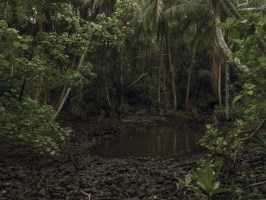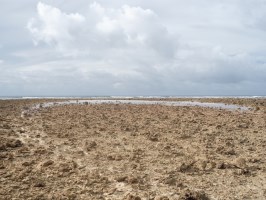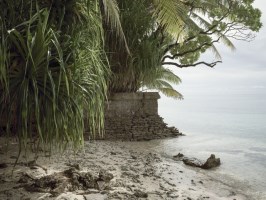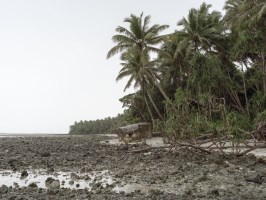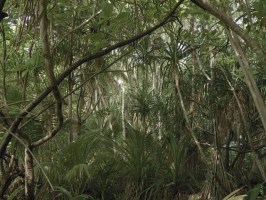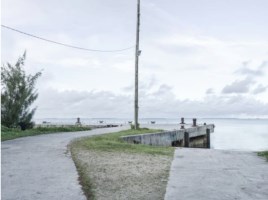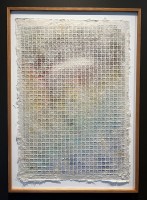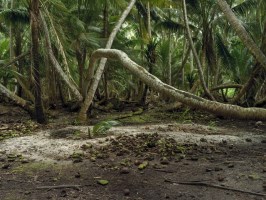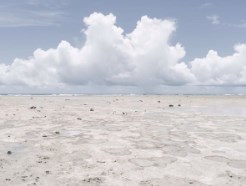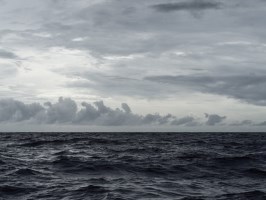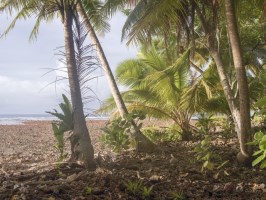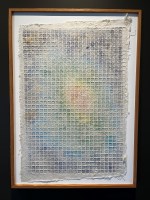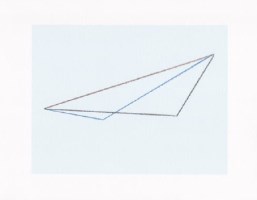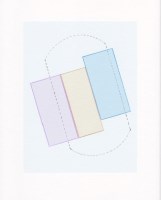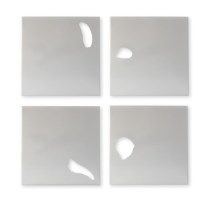Matthew Arnold
-
Œuvres
Longing for Amelia— The Historical and Mythological Landscape
Just before dawn on July 2, 1937, Amelia Earhart and her navigator Fred Noonan took off from Lae, New Guinea in their heavily loaded Electra L-10E aircraft. The destination was Howland Island, a flat narrow bit of land, 6500 feet long and 1600 feet wide—intended to be used to land and refuel, in order to continue on to Hawaii. This was to be the third to the last of 32 legs of her heroic but ill-fated attempt to be the first woman to circumnavigate the globe by airplane. Unfortunately she disappeared. The last confirmed radio transmission came when Earhart and Noonan said they were nearly 200 miles from Howland. There was no further contact.
Eighty-three years after Earhart’s disappearance, only theories remain, yet her legend survives in the many individuals still searching for evidence of what happened to her on that fateful day in 1937.
What is it that keeps us so captivated with Earhart?
Is it an admiration for her bold fearlessness as an aviator in an industry and era dominated by men? Is the mythology surrounding her disappearance so intriguing because she disappeared in such a remote and unknown environment to most Westerners? Is it the undeniable romance of an almost archetypal tragedy—a 20th century Icarus? Or is it because it occurred under such extraordinary circumstances, only a few years prior to the beginning of the Second World War? With his new photographic project, Matthew Arnold will document the environs that play host to the many theories which attempt to resolve the mystery of Amelia Earhart’s disappearance.
The work presented here is from the first stage of Arnold’s project—a five-week expedition to the outer-reaches of the Mariana and Marshall Islands, photographing the seascapes and landscapes specific to the “Japanese Capture” theory. It is a theory which involves a forced landing in fortified Japanese territory followed by capture, imprisonment, and possible execution at the hands of their Imperial Navy.
This expedition is the culmination of over a year’s worth of research, fundraising, and planning. While this may only be the beginning stage, the idea is to present each stage as its own entity so as to give weight to each theory of Earhart’s demise.
The complete breadth of this project will involve travel to multiple parts of the Central and South Pacific, photographing related seascapes and landscapes of these remote regions. The Phoenix Islands, as an example, hold multiple theories to Earhart’s disappearance, including both the “Nikumaroro Theory,” and the “Orona Theory” where she is believed to have succumbed to the elements after landing on these deserted islands. In Papua New Guinea he will photograph both the “New Britain Island” and “Buka Island” theories, that suggest she crashed while attempting to return to New Guinea.
In photographing these remote regions, along with the incorporation of many historical ephemera, Arnold will give visual detail to each of the theories surrounding Earhart’s disappearance. The images will illustrate his notion of both the historical and mythological landscape surrounding the hypotheses of an historic heroine’s unknown fate in a distant land.
-
Biographie
Biographie
USA ,
La première exposition personnelle de Matthew Arnold sur ce projet a récemment été présentée au Turchin Center for the Visual Arts de l'Appalachian State University.
Son projet précédent a été publié sous la forme d'une monographie intitulée Topography Is Fate—North African Battlefields of World War II, par l'éditeur allemand Kehrer Verlag, Heidelberg, avec une préface écrite par Hilary Roberts, conservatrice de recherche en photographie aux Imperial War Museums de Bretagne. Il a été exposé à la Happy Lucky No. 1 Gallery de New York, à la Metropolitan Gallery de Philadelphie et a été présenté dans des festivals de photographie et des expositions collectives à travers le monde, y compris une importante exposition au MFA de Boston intitulée Permanent War. L'ère des conflits mondiaux.
Arnold a récemment été nommé 2020 Critical Mass Top 50 Photographer par Photolucida (son deuxième) pour son projet sur la disparition d'Amelia Earhart. En 2020, il a été invité à faire partie du jury du Earth Photo Prize de la Royal Geographical Society de Londres. Parmi les autres prix qu'il a remportés, il a été nommé au Museum of Fine Arts de Boston, Traveling Fellow, ainsi que parmi les 50 meilleurs photographes émergents de LensCulture.
Matthew Arnold vit et travaille actuellement à Los Angeles. -
Expositions
